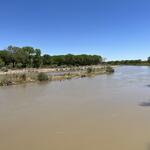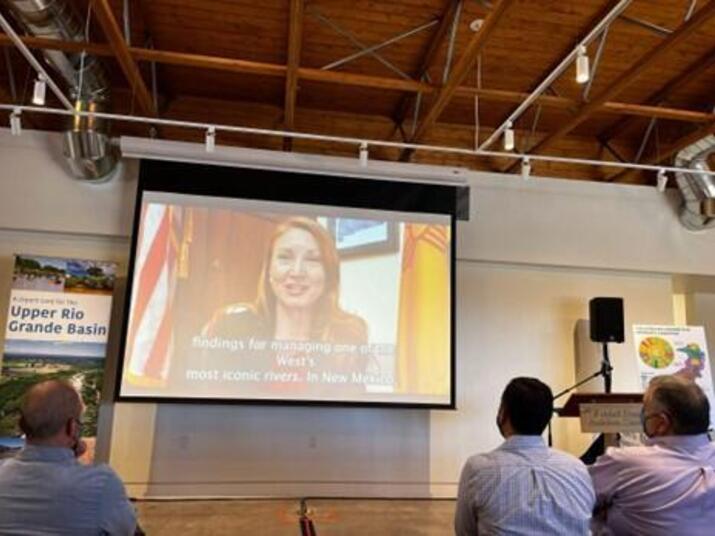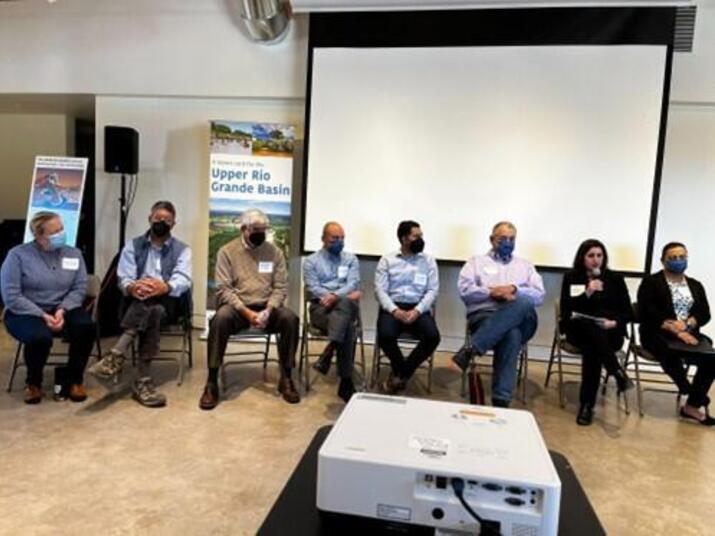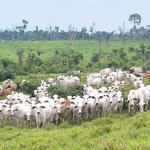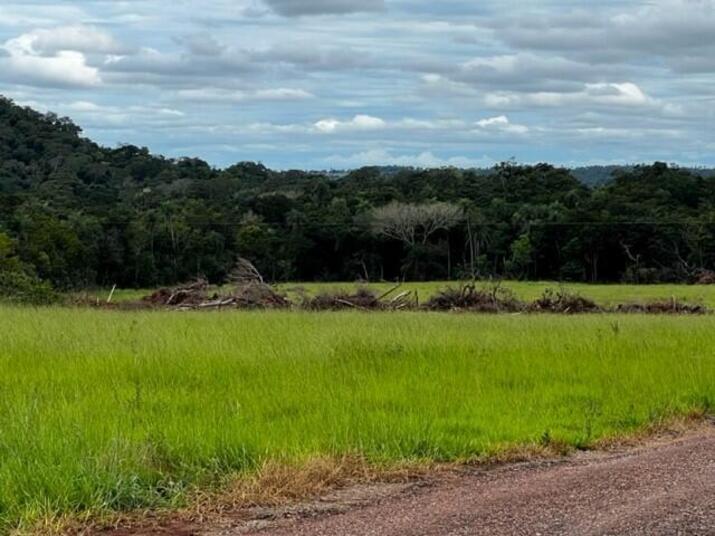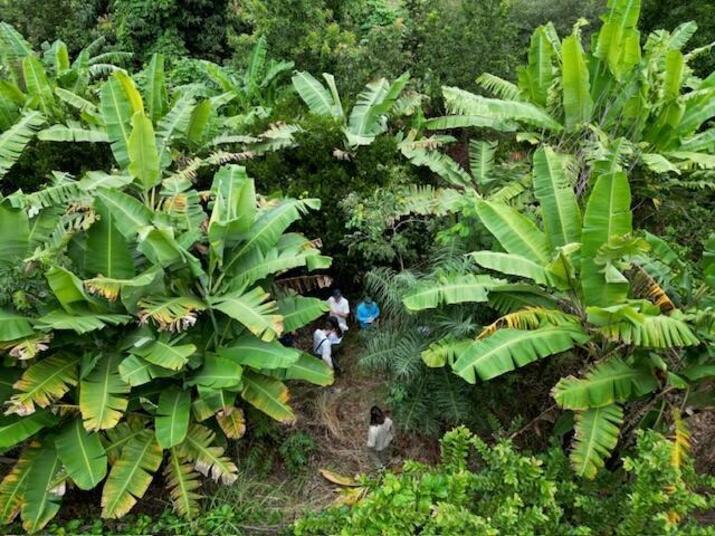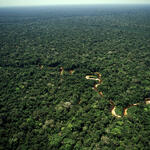- Date: 06 December 2022
- Author: Alex Vinueza-Nichols, Program Manager, Food Loss & Waste
Whoever says there’s no use crying over spilled milk obviously hasn’t seen a recent study by Triangle Associates and World Wildlife Fund (WWF), which found that K-12 schools in the US waste 45 million gallons of milk annually, at great cost to taxpayers and the planet. In the process of producing, transporting, cooling, and storing milk no one drinks, the nation uses nearly 10,000 Olympic swimming pools worth of water and emits carbon pollution equivalent to 77,000 gas-powered vehicles—year after year. Fortunately, we’ve identified a way to lower costs to people and the planet, while also addressing nutrition intake: transition from individual milk cartons to bulk milk dispensers (BMDs).
A BMD is a reusable, refillable container that can hold a 3–5-gallon bag of cooled liquid milk, with multiple spigots that students and teachers can use to serve themselves in the school cafeteria. Growing evidence shows that BMDs can (1) reduce packaging and milk waste, (2) lower the cost of purchasing, disposal, and refrigeration for schools, (3) help improve nutrition by increasing overall milk consumption, and (4) spare future generations the trauma of struggling to open a milk carton. Okay, I added that last one, but c’mon, we’ve all been there.
- Date: 05 December 2022
- Author: Melissa D. Ho, Senior Vice President, Freshwater and Food
Water is essential to life; it flows through all plants, people, and wildlife. We depend on abundant and clean freshwater to drink and flourish, to sustain thriving healthy ecosystems, floodplains, and fisheries, and to grow crops and livestock that feed and nourish humanity. While the Earth is covered in vast amounts of water, we forget or we take for granted that freshwater is a finite and precious resource. Despite the essential role to life and livelihoods, much of our freshwater and the biodiversity it supports are in dire trouble. Only one-third of the world's long rivers remain free-flowing and freshwater species are among the most threatened on the planet; one in three face extinction. The biggest threats and drivers of freshwater degradation are unsustainable agricultural water use, which is causing pollution and overextraction of surface and groundwater resources, and poorly planned infrastructure, which fragments rivers and wetlands and disrupts connectivity and function of ecosystems. All of these challenges are exacerbated by climate change.
- Date: 01 December 2022
- Author: Enrique Prunes
The Upper Rio Grande’s first Basin Health Report Card was launched on Thursday, November 17th. The results, developed by leading ecosystem scientists and local experts to help residents and policymakers better understand the health of their local waters, are mixed: the Upper Rio Grande basin scored a “C.” There is not enough water in this region of the Rio Grande to meet the current needs of all users and sustain a healthy river ecosystem into the future.
The Upper Rio Grande, flowing from headwaters in the Rocky Mountains of Colorado, through New Mexico, and ending in Texas, has supported people and wildlife for thousands of years. More than 6 million people in the United States rely on its resources. Native Nations, Pueblos, and Spanish acequias depend on the river for water, food, and shelter. The river also supports the Chihuahuan Desert, one of the three most biodiverse deserts in the world. As one of the five longest rivers in the US, an American Heritage, and Wild & Scenic River, the Rio Grande’s value as a critical watershed for the people and species of the Southwest region is unmatched.
The launch of the report card was similar to its development – it brought together people from all corners of the region to discuss the status and next steps for water in the basin.
Partnerships prove critical to tackling the world’s water challenges; there is not enough money, time, or resources for any one organization to “solve” the world’s water challenges on its own. The creation of the report card is part of a partnership among Audubon Southwest, University of Massachusetts Amherst, University of Maryland Center for Environmental Science, and World Wildlife Fund and engaged over 100 stakeholders from over 60 organizations. As discussed in the event and throughout the report card’s development, diverse engagement across stakeholders is needed to create a shared vision for protection.
Local Native Nations and Pueblo communities throughout the Upper Rio Grande region are valued members of water rights and management conversations. Engagement with these groups throughout the two-year report card development process was a clear priority, yet it was difficult to fully engage with those groups. Beyond the launch, WWF aims to utilize the report card findings to support advocacy efforts and ensure there are consistent opportunities for engagement and discussion.
This assessment is unique in that it includes existing and new information from across all three states: Colorado, New Mexico, and Texas. Furthermore, it provides regional specificity, highlighting that the indicator scores worsen from north to south. Some indicators may score an A in one locale, but score a C in another. This information allows for location specific management changes to improve on targeted indicators.
““The Rio Grande Basin is unique in its multi-state and binational nature and it makes sense that approaches to dealing with transboundary issues in the basin would be just as unique. This report provides important information for the upper and middle portion of the region and paves the way for discussion and the development of guidance and models that can be applied later along the international reach.” ”
Leslie Grijalva
Environmental Protection Specialist, Environmental Management Division Program Manager Rio Grande Texas Clean Rivers Program, International Boundary and Water Commission, U.S. Section
By convening action at all levels—from local communities to industry to governments—we can usher in a future of cooperation and water security.
- Date: 23 November 2022
- Author: Sheila Bonini, Senior Vice President, Private Sector Engagement
Having just returned from COP27 in Egypt, I would like to share my reflections on the state of the climate dialogue. Food was back on the agenda this year in a major way. It’s an area where business can support solutions around sustainable agriculture, resilience, and land-use change. And while there was some progress overall at COP27, including a welcome step towards a loss and damage fund to help vulnerable countries hit hard by climate disasters, my biggest takeaway is that climate actions aren’t moving quickly enough.
Climate change could depress growth in global agriculture yields up to 30% by 2050. At COP27, we introduced, It’s Time: Solving the Great Food Puzzle for a 1.5° C Future, A WWF Food Manifesto. It calls for food-based climate action pledges to be implemented at the national and regional levels and identifies five decisive actions central to doing so. You can read about these actions here.
Without resilient agriculture, crop failures and food insecurity will likely lead to increased environmental degradation as agriculture shifts to new locations and communities exploit natural resources to accommodate lost livelihoods and incomes. This challenge is particularly acute in Africa.
WWF recently launched, Scaling and Accelerating Adaption in Food Systems in Africa, a report that assessed Nationally Determined Contributions (NDCs) and National Adaptation Plans (NAPs). It found that adaptation plans must be broadened to include shifts to healthier and more sustainable diets combined with radical cuts in food loss and waste alongside improved food production. Only by adopting full food systems approaches, from farm to fork, can we achieve food security and a stable climate. African countries must set more ambitious targets, but finance must also be allocated to the continent and channeled to the local communities that will implement solutions.
By narrowly focusing only on agricultural production, negotiations failed to deliver a transformative plan on food. Nature is humanity’s first line of defense against the impacts of climate change, but climate change itself poses an immediate and existential threat to our natural ecosystems –on which our food systems rely. Ecosystem services, such as pollination of crops, water filtration, flood mitigation, waste decomposition, carbon sequestration and climate regulation are worth approximately $125 trillion dollars annually, providing valuable economic benefits to agriculture, society and business. These economic externalities and system dynamics need to be reflected in policy and finance. There is still hope though that with a joint working group on agriculture and food security over the next four years, it is possible to increase the ambition and build a more holistic approach. Read more on WWF’s hopes for the work ahead here, as well as a joint open letter to negotiators and ministers from 100 organizations urging for more ambitious action to accelerate the transition to more equitable and sustainable food systems.
As U.S. Special Presidential Envoy for Climate John Kerry so eloquently stated in the run-up to Sharm el-Sheikh about the fight against climate change: “it’s not just the work of one government, or public or private sector, bilateral or multilateral. There’s only one way to secure the future. We have to summon the greatest effort we’ve ever assembled, with the greatest sense of urgency. And we must win this fight, because the alternative is beyond unacceptable.”
Unfortunately, a disappointing roadmap was released by 14 of the world’s largest agricultural companies to address deforestation associated with palm, beef, and soy production in biomes around the world. While the roadmap demonstrates progress for some commodities, it represents a step back for others and ultimately falls short of the 1.5° C pathway that was promised at last year’s COP. There’s a clear path for agricultural companies to shift food production to degraded land.
This message was sent by the newly elected Brazilian President, Lula da Silva, in his address at COP where he stated, “I am sure that Brazilian agri-business will be a strategic ally in our government looking for regenerative and sustainable agriculture. We have 30m hectares of degraded lands. We don’t need to deforest one square meter to be one of the largest food producers in the world.” And while a more sustainable agricultural model is a good step, nature-based solutions also need to be part of the equation.
We have the opportunity to invest in nature to mitigate the worst effects of climate change as well as be prepared for changes that threaten our ecosystems and our economies. Using land for farming and conserving and restoring nature’s ability to provide multiple benefits, resources, and services is not mutually exclusive. As Secretary Kerry so adeptly noted, “the alternative is beyond unacceptable.”
For more on WWF’s take-aways from COP27, see our closing press release here.
- Date: 17 November 2022
- Author: Erin Simon
Take a moment and look around. How many single-use plastic items can you spot?
No matter where you are, single-use plastic isn’t far behind – whether it’s a shopping bag, food packaging or even a bottle of medication. And more likely than not, many of these items will end up contributing to the 11 million tons of plastic pollution that enter our oceans every year.
Consumption of single-use plastic has exploded in recent years, creating a global crisis that impacts nature, people, and the climate. To reduce this stress, we need to start by reducing how many resources we take from the planet– and just as importantly, start valuing the resources we already have in circulation. That’s where reuse systems come in.
- Date: 15 November 2022
On America Recycles Day 2020, the United States announced a target recycling rate of 50% by 2030. It’s an impressive goal, and there’s a lot of work to be done to get there. Just two years into that goal, not enough progress has been made. With about 22,000 municipalities managing their own recycling systems, we need national ambition and consistent action to change the way we recycle.
That’s why OneSource Coalition is putting Extended Producer Responsibility—also known as EPR—at the forefront of today's America Recycles Day 2022.
- Date: 15 November 2022
- Author: Yvette Cabrera (NRDC) and Pete Pearson (WWF)
COP27 (the 27th meeting of the Conference of Parties to the international climate convention) is underway and we face the stark realization that we are missing our climate targets globally.
But there is hope. Food loss and waste (FLW) are significant contributors to human-caused greenhouse gas (GHG) emissions, responsible for 8-10% of emissions globally. Reducing FLW alone can cut methane emissions by up to 15%, which is half of the Global Methane Pledge of 30% reduction by 2030. To drive down emissions and keep global warming below the critical 1.5ºC, food loss and waste reduction is a top climate solution that must be accounted for in countries’ Nationally Determined Commitments (NDCs) towards the Paris Climate Agreement.
- Date: 14 November 2022
Mention deforestation and the mind automatically travels to Brazil, where wide swaths of the Amazon rainforest and the Cerrado savanna have been cut down and converted into farmland. In fact, the largest cause of deforestation in Brazil is the conversion of forest areas to pasture for the production of beef.
Brazil is one of the world’s largest beef producers – and because of that, it also produces a lot of leather. But while nearly 80 percent of the beef processed in Brazil is used for domestic consumption, more than 80 percent of the leather produced from cowhides in Brazil is exported, for use in the automobile industry, footwear, handbags and apparel.
The leather industry has long positioned itself as being unable to take significant steps to fight deforestation claiming that the cowhides used by tanneries are only a by-product of beef production. Tanneries get their supply, they say, not from farmers but from meatpackers, making it difficult if not impossible to trace whether the hides came from cattle that were raised on deforested land.
These circumstances are starting to change. Beginning with support from the Moore Foundation and now with an additional grant from the Tapestry Foundation, World Wildlife Fund is working with brands and tanneries in Brazil to develop Deforestation and Conversion Free (DCF) sources of hides, catalyzing efforts to ensure that hides don’t come from deforested land. Challenges persist: a single cow can be owned by many beef ranchers as it’s raised from a newborn calf to fully grown and ready for processing. But several tanneries are starting pilot projects to address the challenges of tracing the origins of those hides.
This is the start of a journey that will take time to realize outcomes. The goal is not just to eliminate illegal deforestation from the supply chain, but rather stop ALL deforestation, legal and illegal. By accelerating the development and identification of verification methods, standards, and incentives to certify DCF leather originating in Brazil, WWF and the Tapestry Foundation are aiming to enhance traceability in cattle production and the leather value chain to drive a more sustainable future for the industry.
“We’re in the very initial stages of this effort,” said Fernando Bellese, senior director for beef and leather supply chains at WWF. “It’s one thing for the large tanneries to participate in pilot programs, but our goal is to develop solutions for indirect suppliers with cow or calf operations to help other players in the downstream supply chain, including smaller tanneries, to participate in the discussion. That will only happen if we can develop a credible verification system that is trusted by consumers, retailers, brands and other downstream buyers of leather to apply additional pressure for the production of DCF leather.”
“The Tapestry Foundation continues to work in concert with WWF to ensure the groundwork is laid for a leather supply chain program that is sustainable, successful, and delivers solutions that will create impact,” said Julia Furnari, Director, Tapestry Foundation. “In partnership with WWF, we are building accountability and trust into leather supply chains and, ultimately, establishing new standards for traceability.”
Leather is big business in Brazil, and the cowhides produced there find their way into automobile interiors, shoes, purses, clothing, and upholstery. That is where the urgency of this effort needs to be felt — and heard.
To learn more about leather’s role in DCF production, read: Leather Also Has a Role to Play in the Fight Against Deforestation
- Date: 07 November 2022
- Author: Linda K. Walker, Senior Director, Corporate Engagement, Forests, WWF
WWF and HP accelerate forest protection, management and restoration in key landscapes in Australia, Brazil and Peru
As a part of World Wildlife Fund (WWF) and HP Inc.’s expanded forest conservation partnership to help protect, restore and improve the management of nearly 1 million acres of forest, our collaboration will accelerate forest protection and restoration efforts in Brazil’s Atlantic Forest, a global biodiversity hot spot and home to some of the last jaguar populations on Earth. We will also accelerate conservation efforts in two new landscapes: Madre de Dios in Peru, near the headwaters of the Amazon River basin, and the forests of eastern Australia, home to endangered koalas and other species that have been severely impacted by recent wildfires. Work in these three critical landscapes totals nearly 450,000 acres (182,000 hectares).
WWF and HP’s approach recognizes the paramount importance of protecting and better managing existing forests, then restoring forests that have been lost. Our work is grounded in a commitment to put people first, ensuring that each effort prioritizes Indigenous people and community engagement, social safeguards, transparency, and equitable benefits. By doing so, we are not only ensuring a future for forests but also for those who depend on them.
- Date: 26 October 2022
Despite the period of historic drought that has crippled parts of the Northern Great Plains (NGP) over the past two years, during the spring of 2022, WWF and Air Wick’s One Square Foot (OSF) initiative reseeded 2,961 acres of marginal cropland back to native grasses and forbs totaling 128,981,160 square feet.
The goal of this three-year collaborative initiative is to restore a minimum of 1 billion square feet (approximately 23 thousand acres) of previously plowed grassland back to thriving prairie for wildlife, pollinators, and sustainable ranching operations.
Although historic levels of drought forced some scaling back of the planned rate of reseeding, by closely monitoring weather trends, and planting in areas where precipitation patterns were favorable and chances of reseeding were relatively high, the project was able to make headway. Grassland ecosystems are highly complex and there is still much to discover about their restoration and conservation. In a sense, grasslands can be compared to forests, but on a smaller scale. Restoration takes time and patience.
Joe Russell, who manages the Veebaray Cattle Company 30 miles west of Sydney, Montana, was one of the first ranchers to participate in OSF. In the fall of 2021, 235 acres of marginal cropland on the ranch were reseeded back to grassland.
This past summer, the first signs of real grassland recovery began to show, with bright yellow prairie coneflowers—great food plants for seed-eating birds and native pollinators—dotting the formerly plowed field. Grassland ecosystems can take years to recover in the best of years, so to see the land respond so quickly to the reseeding effort is promising.


